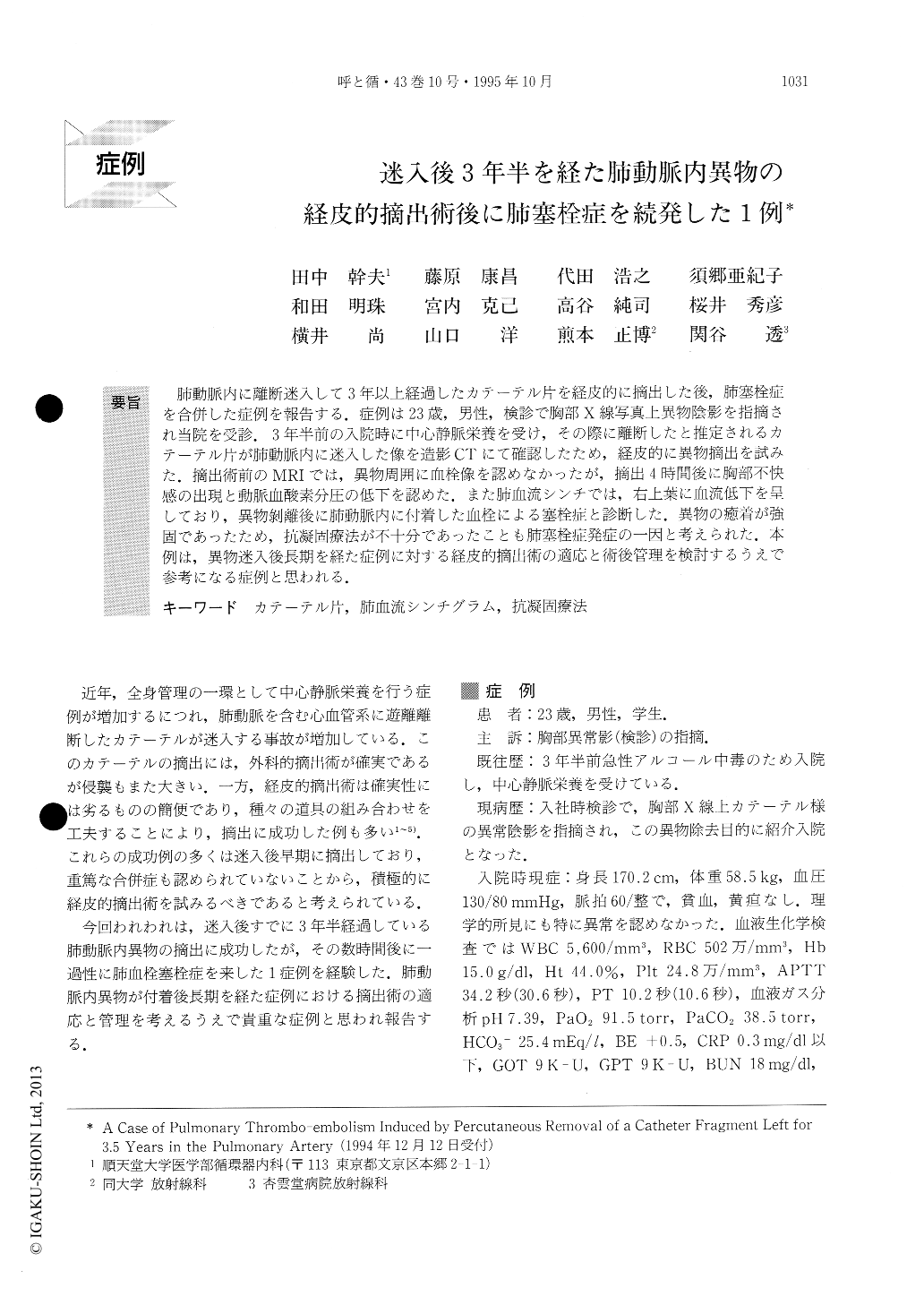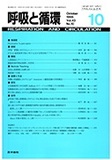Japanese
English
- 有料閲覧
- Abstract 文献概要
- 1ページ目 Look Inside
肺動脈内に離断迷入して3年以上経過したカテーテル片を経皮的に摘出した後,肺塞栓症を合併した症例を報告する.症例は23歳,男性,検診で胸部X線写真上異物陰影を指摘され当院を受診.3年半前の入院時に中心静脈栄養を受け,その際に離断したと推定されるカテーテル片が肺動脈内に迷入した像を造影CTにて確認したため,経皮的に異物摘出を試みた.摘出術前のMRIでは,異物周囲に血栓像を認めなかったが,摘出4時間後に胸部不快感の出現と動脈血酸素分圧の低下を認めた.また肺血流シンチでは,右上葉に血流低下を呈しており,異物剥離後に肺動脈内に付着した血栓による塞栓症と診断した.異物の癒着が強固であったため,抗凝固療法が不十分であったことも肺塞栓症発症の一因と考えられた.本例は,異物迷入後長期を経た症例に対する経皮的摘出術の適応と術後管理を検討するうえで参考になる症例と思われる.
We report a 23 year-old male case of pulmonary thrombo-embolism which developed after the removal of a catheter fragment. The catheter fragment was assumed to be an aberration of the broken catheter which had been inserted for central venous nutrition 3. 5 years ago. The placement of the catheter fragment was identified by enhanced computed tomogram and magnetic resonance imaging without any evidence of thrombus. Although the percutaneous removal was successfully carried out, the patient experienced chest discomfort and partial pressure of arterial oxygen decreased 4 hours after the removal. Pulmonary per-fusion scan showed a small perfusion defect in the right upper lobe of the lung, indicating the development of distal pulmonary thromboembolism induced by a fresh thrombus produced after the removal of the catheter fragment. Since the adhesion of the catheter fragment to the inner surface of the pulmonary artery was so tight. anti - coagulative therapy was insufficiently effective, and this might have accelerated thrombus formation. This case provides suggestions concerning how to treat foreign bodies which have remained for a long term in the cardiovascular system.

Copyright © 1995, Igaku-Shoin Ltd. All rights reserved.


